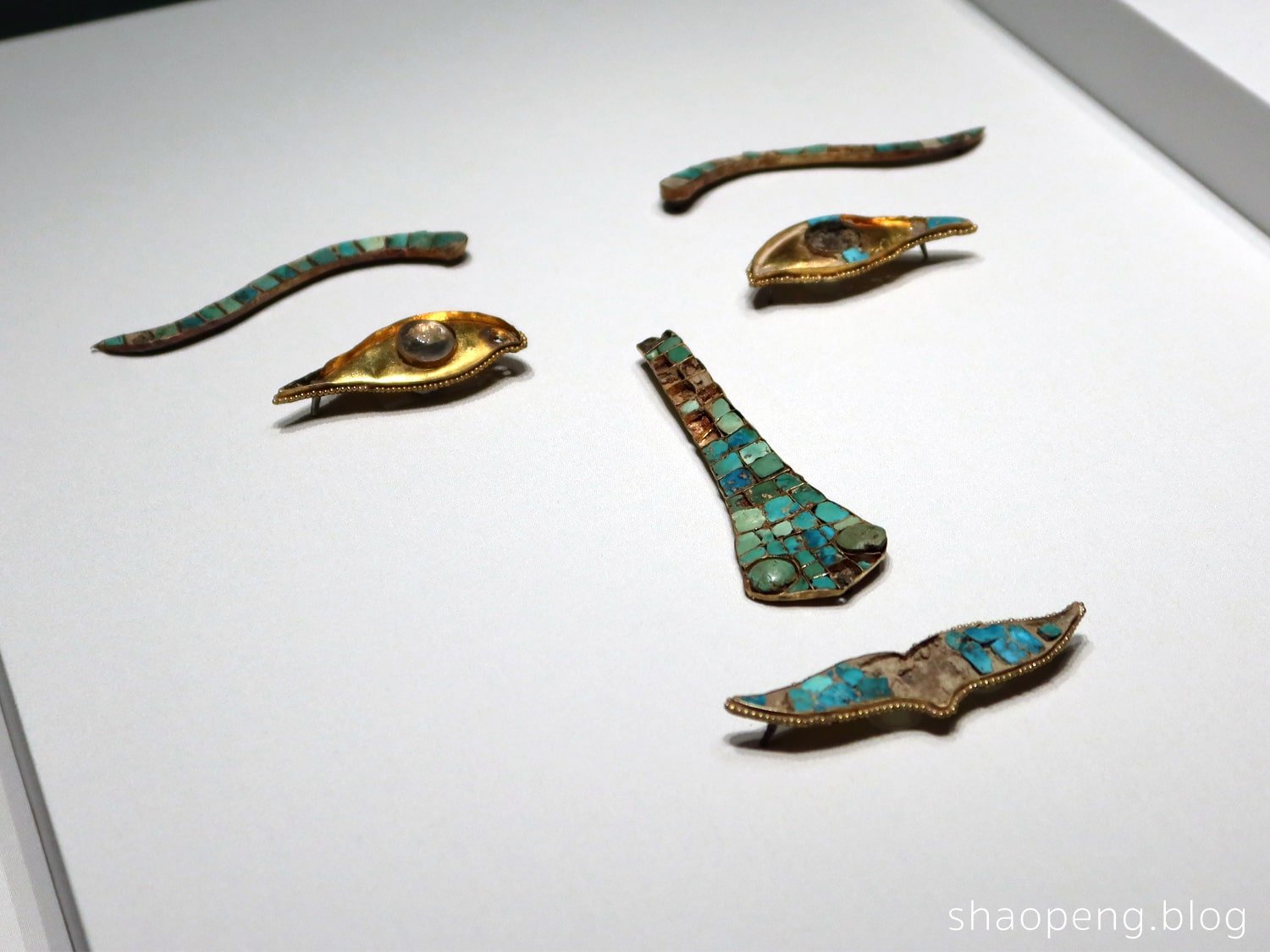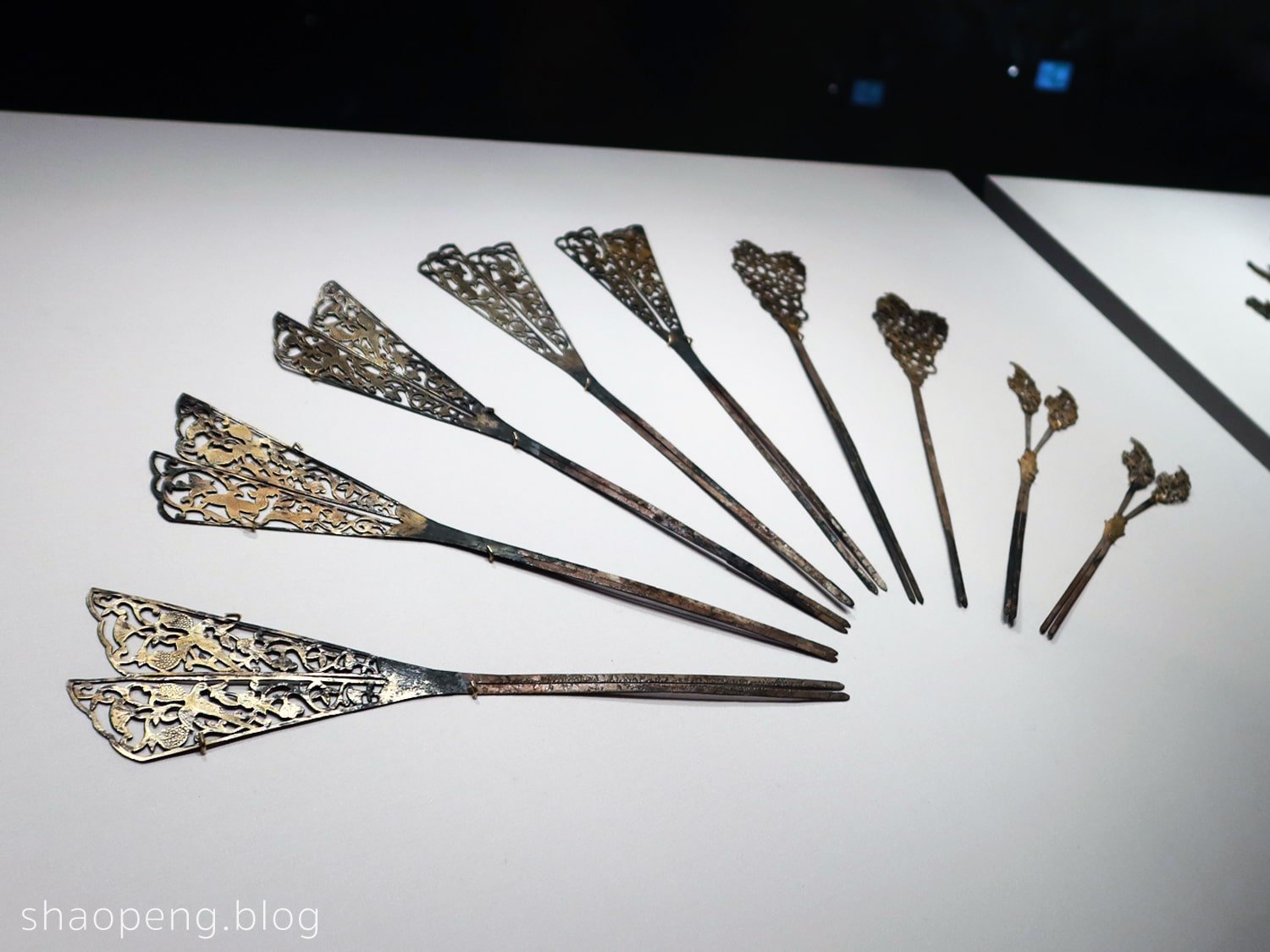Glimpses of Splendour: China's Dazzling Past Unveiled Through Ancient Gold
Radiance: Ancient Gold exhibition, held at the prestigious Hong Kong Palace Museum, is an invitation to embark on an extraordinary journey into the glittering history of China across time and space.
Sense of Wander: ★★★★★
A gilt-silver hairpin depicts a majestic phoenix gracefully perched on a wisp of cloud. Originating in the Tang dynasty (618—907), phoenix hairpins rose to prominence as prestigious symbols of status during the Ming dynasty (1368-1644).
HONG KONG — Embarking on an extraordinary journey, I wasted no time upon my arrival in Hong Kong. After swiftly checking into the hotel, my first thing was to visit the highly anticipated exhibition on view at the renowned Hong Kong Palace Museum.
Radiance: Ancient Gold is a rare exhibition of its kind, showcasing more than 200 sets of ancient gold objects and jewellery discovered throughout the vast landscapes of China. From the Central Plains to the Eurasian steppe and the Tibetan highlands, these remarkable artefacts — with the oldest piece dating back to the 18th century BC — take centre stage.
The inherent value of its material often led gold objects or jewellery to its conversion into currency or the crafting of other magnificent treasures. As such, the survival of gold objects from bygone eras can only be described as a miraculous feat. Radiance: Ancient Gold presents us a truly extraordinary opportunity to examine the museum’s extensive collection of gold ornaments, spanning an astonishing timeline of over 3,000 years.
The exhibition is thoughtfully divided into three sections: “New Trends: Steppe and Early China", "Exchanges between the Tubo Kingdom and the Tang Dynasty", and "Convergence: From the Liao and the Song to the Ming Dynasties”. While each section unveils unique stylistic variations, it becomes clear that gold played a pivotal role in the daily life, culture, and political affairs of ancient China; it often served as a catalyst for exchange, fostering connections and interactions across vast territories.
Splendour of the Steppe
Stepping into the exhibition, I was immediately greeted by a dazzling array of gold ornaments once treasured by the elite of the Great Steppe, a vast region stretching from northern China to southern Siberia.
In ancient Chinese literature, scholars refer to the steppe elites residing in Inner Mongolia, northern Shaanxi province, and Ningxia Hui Autonomous Region from the Warring States period (475-221 BC) to the Han dynasty (206 BC - 220) as the "Xiongnu", who are credited with the establishment of the first steppe empire. For them, gold served as an undeniable symbol of prestige and status.
In this shimmering world of steppe gold, personal adornments like earrings, necklaces, and pectorals captivate the eye. Among them, garment hooks and belt ornaments take centre stage — not just for their ornamental allure but also for their practicality; they served the nomads who relied on trousers for their horse-riding pursuits. Gold's allure and craftsmanship also brought a touch of splendour to chariot decorations, inspired by the neighboring Achaemenid Empire (550—331 BC).
An ear pendant adorned with spiraling motif probably belonged to an elite of the Xianbei tribe, who broke away from the Xiongnu Empire in the 1st century BC.
Adorned with beast-inspired iconography, such as horses, stags, ibex, and even fearsome wolves and tigers, these glittering ornaments illustrate the variety of fauna that co-lived with the nomads on the steppe. Among them lies a tiger-shaped plaque from southern Siberia. Crafted from thin sheet of gold, its body has been artfully stylised into spiral patterns and twisted hindquarters through repoussé and chasing techniques.
A crown-like headdress adorned with stags and beaked animals, believed to have come from the possession of a Xiongnu elite, showcases the steppe's rich design vocabulary, drawing inspiration from the realm of mythical creatures. Imaginary hybrids, like stags with bird's beak or antler tips transformed into the a bird’s head, find their place alongside depictions of real animals — a captivating fusion of reality and fantasy.
Beyond zoomorphic motifs, my attention is captivated by an earring pendant characterised by spiral motifs, boasting a minimalistic and geometric style that transcends time. Dating back to between the 1st and 3rd century, this exquisite earring is believed to have adorned a noble of the Xianbei tribe, who broke away from the Xiongnu Empire in the 1st century BC, establishing their influence over the Mongolian and northern Chinese steppe regions.
While the design schemes of steppe gold jewellery differ from the aesthetics of Central Plains, gold ornaments uncovered from the latter hint at an intriguing cultural exchange. It appears that the steppe's distinctive fashion sensibilities found their way into the elite circles of the Western Han, leading to imitation and adaptation.
A pair of stags hammered from thin sheets of gold exemplifies the ‘animal style” prevalent in the artefacts from the Great Steppe.
A gold headdress decorated with animal motif in repoussé probably belonged to a Xiongnu noble.
Splendour of Interwoven Influences
Close contacts and cultural exchanges have proven to be a catalyst for prosperity and artistic evolution. Not only did such exchange shape the artistic legacies of the steppe and Central Plains, but their impact resonated even in later periods, such the Tubo Kingdom, a formidable power that emerged in the beginning of the 7th century on the Tibet Plateau.
As contemporaries of the renowned Tang Empire (618—907), the Tubo Kingdom thrived through trade along the Silk Roads, fostering a distinctive and eclectic style of gold ornaments influenced by Central Plains, South Asian, as well as Central and Western Asian cultures. Historical records indicate the exchange of gold objects as gifts between Tang and Tubo, as well as the importation of Tang pieces through matrimonial alliances.
As I wander in the exhibition space, my gaze is fixated on a plaque featuring a pair of confronting horses. Upon closer examination, I’m intrigued to discover that these two horses possess wings and unicorn-like horns on their foreheads. The origin of winged animals and unicorn can be traced to Western Asia.
Beyond stylistic influences, the artistry of Tubo’s gold pieces was probably influenced by Sassanian craftsmen, known for their unparalleled excellence in gold and silver working.
A Tubo plaque featuring confronting horses — adorned with wings and unicorn-like horns— showcases a blend of foreign artistic influences.
Fusion of Sassanian and Tubo styles are evident on a gold plaque that depicts a mounted archery.
As someone with formal training in jewellery making, I’m caught by the meticulous workmanship displayed in many of the Tubo pieces. Whether depicting animals, figures, or floral designs, these pieces stand in stark contrast to the bold and less refined craftsmanship of the steppe ornaments from early periods.
One particular example that showcases the fine craftsmanship of Tubo is a plaque featuring an archer on horseback. The attention to detail is remarkable, with intricate decorations adorning the archer's tunic, providing a glimpse into the fashion of the time. The depiction of the galloping horse, rendered with muscular precision in gold, creates a sense of motion and dynamism. The lavish embellishments, including bridle and saddle ornaments, as well as leaf-shaped plaques, highlight the importance given to horses in Tubo culture.
It is worth noting that the iconography depicted in this gold plaque, specifically the mounted archer with his braid flying behind him, is reminiscent of the royal hunting scene commonly found in the silver and gold artefacts of the Sassanian Empire (224-651). This testifies to the mixture of cultural Sassanian influences seen in Tubo gold.
Near this plaque is a showcase of a selection of horse accessories, which would have adorned the harnesses and saddles. These large gold plaques feature exquisite animal and floral motifs, illustrating the artistry of Tubo craftsmen. Some of the pieces are adorned with turquoise inlay, giving rise to a style that would later become synonymous with the distinctive aesthetics of the region.
Its epitome is testified by none other than a pair of shoulder ornaments from pre-modern Tibet. The lower part of the ornaments showcases concentric rows of intricately carved turquoise, forming a vibrant and life-like portrayal of a flower, reminiscent of a lotus blossom.
Above this flower, the depiction of an auspicious monster, known as the "Face of Glory," adds an element of beauty and mystique. While these ornaments date back to the 18th and 19th century (they were worn in pairs by officials who governed from the 18th to the mid-20th century at important ceremonies marking the New Year), they exemplify the enduring legacy of craftsmanship on the Tibetan Plateau.
Shoulder ornament inlaid with turquoise, ruby, and coral is a remarkable display of craftsmanship in Tubo’s goldsmithing, lapidary, and inlay techniques.
Splendour of Imperial China
The last section of the exhibition focuses on gold objects and jewellery from Imperial China, encompassing the Liao (907-1125), the Song (960-1279), and the Ming (1368-1644) dynasties.
Despite variations in styles and aesthetics across these dynasties, gold remained a prominent symbol of nobility and a favoured choice among the elite in both the Central Plains and Northern China.
The Ming dynasty, in particular, brought significant changes to gold ornaments, introducing new types and categories. It was also during this period that the term "shoushi" (meaning "ornament for the head") emerged as an exclusive term for women's jewellery.
The section highlights a diverse collection of gold jewellery, including hairpins, necklaces, crowns, earrings, and rings. These masterful creations were made using a range of intricate goldworking techniques such as casting, filigree, weaving, granulation, chasing, repoussé, and engraving.
A hair ornament graced by an apsaras with a lotus flower in her hand.
The exhibition Radiance: Ancient Gold invites us to explore the diversity of Chinese gold artefacts, debunking the notion of a linear design narrative. It vividly demonstrates the fact that no style is born in isolation; instead, it emerges through a process of continuous exchange, by means of adoption and adaptation over time.
Featuring remarkable pieces from the Hong Kong Palace Museum Collection and the esteemed Mengdiexuan Collection (whose founder generously donated 946 items to the Hong Kong Palace Museum), this exhibition offers us a glimpse into the opulent history of gold craftsmanship spanning China’s long history.
Personally, I feel a special connection to the objects on display, having had the privilege of handling some of the gold pieces from the Mengdiexuan Collection a couple of years ago, which adds a layer of intimacy to my viewing experience.
While Radiance provides a unique occasion for visitors to immerse in the splendour of ancient civilisations, it is important to note that the exhibition provides only an insight into the vast and intricate world of Chinese gold jewellery, where a rich tapestry of materials, motifs, and artistic expressions flourished.
Despite some skepticism surrounding the authenticity and provenance of certain exhibits, Radiance serves as an invaluable window for visitors to explore and appreciate the diversity of gold objects and jewels that were born within the nation's borders.
As you venture further, you’d be enchanted by the meticulous craftsmanship, intricate details, and profound symbolism that unfold before you. Each piece is embedded with a unique narrative, reflecting the cultural values, aesthetic sensibilities, and historical influences of its time.
In this realm where gold reigns supreme and craftsmanship knows no bounds, witness how artistry, history, and culture converge in shimmering splendour.








Radiance: Ancient Gold is on view at the Hong Kong Palace Museum until October 3, 2023.








